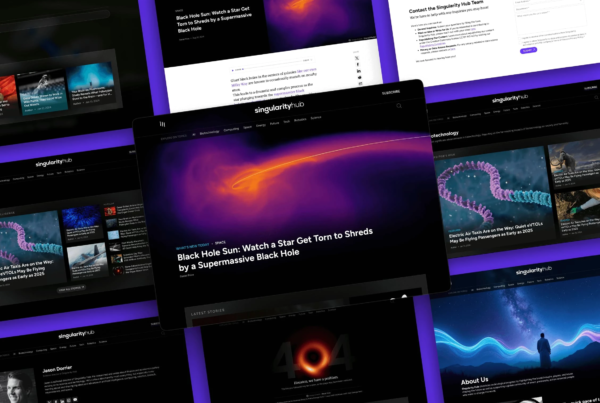For digital publishers, 2023 at times felt like the Col de la Loze stage of the Tour De France. To pedal into 2024 at a pace ahead of the pack (ahem :), here’s our advice on the top 3 learnings affecting digital publishers in 2024.
- Wild digital and social fragmentation
- Content creators should buy vs. build tech
- Advertisers are out on spots n’ dots
#1 There is now wild digital / social fragmentation
2023 was the year of the platform formerly known as Twitter. Regardless of how you feel about the choices made by X, the reality is that we’ve reached the end of monolithic social media discourse. What was once Facebook and Twitter — a general forum for everyone to digitally/socially hang with everyone — has now fragmented, wildly.
Publishers shouldn’t be surprised by this development, but they need to use 2024 to be better aware and prepared to own their own data. There’s simply is too much risk in allowing social networks to control direct subscriber communication.
Said differently, think about all the effort and attention put into Twitter “socializing” by digital publishers in the past 5 years, and the direct audience and earnings growth they have to show for it, right now, and 5 years from now. With that in mind, ask yourself, is the YouTube economy playing out any differently?
Today amongst youth, “YouTube Creator” is a more popular envisioned career than “Astronaut.” However, YouTube creators give away more than half of their income to Google. Theoretically by launching their own website and hosting the same videos, they could instantly double or triple their RPMs. Plus, visitors from Search and Syndication would end up directly on owned creator domains, rather than further-and-further away consuming content for YouTube.
Plus, we haven’t even mentioned the continued erosion of 3rd party cookies, which will make the advertising offerings of monolithic social tech even less attractive. Advertisers will only have one choice: stop pray-and-spray, and instead invest directly in telling their story to a specific, endemic audience that cares deeply about authenticity.
For publishers, that means owning your own data and making sure you’re in control of direct audience relationships and earnings growth drivers. Instead of outsourcing your most critical audience relationships to Big Social, tap into Big Social via influencers from that network and recruit their audience to a publisher-owned experience.
#2: Content creators should build vs. buy their technology according to core competence
In any business, the decision to build vs. buy comes down to core competence. If the desired capability is part of a company’s core competence, build. If the desired capability is outside of a core competence, buy.
No where was this axiom more true than in digital publishing in 2023. Consider what we saw this year with respect to Buzzfeed, Vox Chorus, and Sports Illustrated, and the implications for publishers.
In as few words as possible, Buzzfeed struggled because Google, Amazon, and other Big Tech cracked down on E-E-A-T as the key criteria for directing users to content. In other words, winning in publishing during the 2020s looks like this:
- Possess more and longer experience in a given content category according to variables such as depth and breadth of content coverage, identifiable cross-linking between key terms and articles, and back links from authoritative, high-trafficked websites (and, more recently, verified social media accounts).
- Present higher levels of expertise, according to authors’ and publisher’s credentials, work histories, certifications, and evident commitment and passion for the subject matter. On the backend, make sure website is well-designed and coded (i.e. faster site speed), with an easily-navigable, cohesive, and connected site taxonomy that pipes out data in a library-like fashion for optimal visibility to search, syndication, and other referral traffic crawlers and bots.
- Be authoritative, and demonstrate tangible awareness, knowledge, and conclusive results around the topic at hand. Use data and first person quotations, as well as richer media such as video.
- Demonstrate high level of reader trust, which takes the form of digital metric validation: long session times, deep clicking into more pages, repeated visits from the same users in a given week/month, growing direct-to-domain traffic, sensible domain infrastructure, proper titling, white hat sites only, and users getting the information they need.
Vox Chorus struggled because Vox Media is not a tech company. It was impossible to create leading E-E-A-T content while also building and coding a tech platform to connect into Alphabet, Meta, Atlassian, and the rest of Big Tech.
Sports Illustrated stumbled because they outsourced their core competence, reader trust, to AI-generated personalities and commentary.
In sum, if you are a publisher that needs to grow in the 2020s:
- Focus on creating the best content to engage your present and future audience.
- Outsource building a CMS that integrates with Advertising and Commerce tools.
- Use AI to assist content creators with the remedial tasks that take time away from creating terrific content for the audience
#3: Advertisers are out on spots and dots
As much as we can tell, 2023 was the end of spots and dots. This means 2 things.
First, publishers cannot survive on news only, or commerce only. They instead need to focus on the audience they have versus the audience they want, and evaluate the proper news and commerce portfolio that most smoothly melds the two. We think of it in terms of “Beats” and “Breaks.”
- Beats: content that drives consistent traffic per month over a 6-month time horizon.
- Breaks: content that drives maximal traffic in a 1-month time horizon
Second, publishers have to focus on quality as it relates to recruiting more advertising partners, and more visitors to their content, every month.
- Advertising partners no longer will accept paying to have their brand appear passively in front of an audience. Instead, they want to be a part of authentic stories engaging an endemic audience, with data and reporting connecting the money invested to the value received.
- The best barometer for more pageviews is faster site speed. Once a site starts slowing down due to ads overload, bet on the next Google algo update to punish the publisher for poor user experience. This comes on top of user punishment in the form of skyrocketing bounce rates.
Beyond page load speed, other useful metrics to track site health include domain rating, affiliate link breakage, CLS scores, and lighthouse scores. Site speed, in our estimation, consistently represents the 80/20 ballpark.
—




